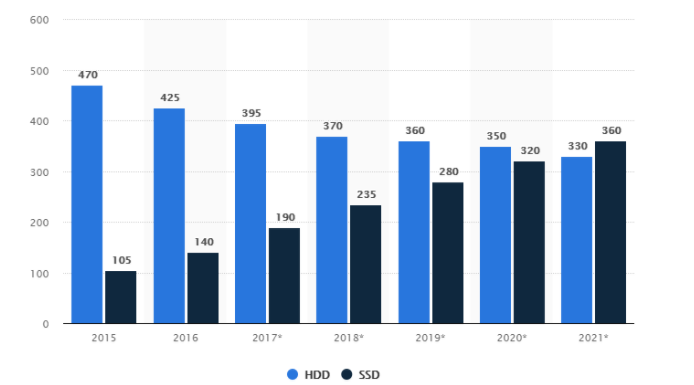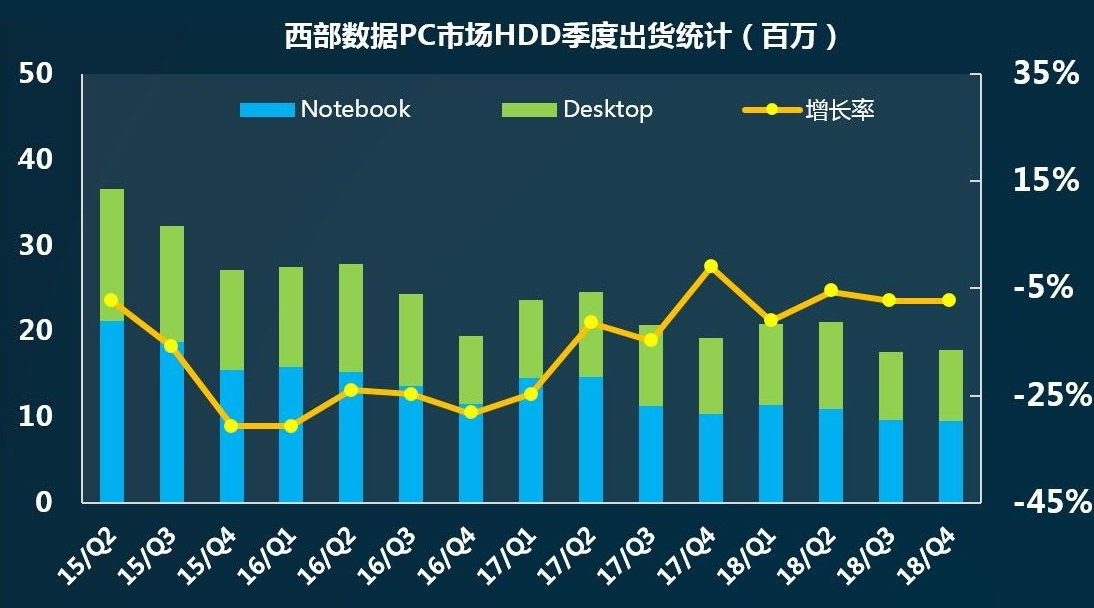Western Digital announced to integrate Flash and HDD technology resources, SSHD will set off a boom?
Western Digital Corporation (WD) has announced that it will integrate Flash and HDD technologies into a separate product business focused on providing a diverse portfolio of storage solutions.
Western Digital, as the leader of data storage industry and the leader of hard disk industry, has occupied the top position in HDD market since its establishment.
As a local storage technology company in the United States, Western Digital's users cover five continents, and its good reputation has gained recognition in the European and American markets. The business covers desktop and laptop computers, mobile phones, handheld devices, enterprise networks and hard drives for home entertainment applications.
Admittedly, the demand for first-generation computers and other products has greatly boosted western Digital's business growth and laid the foundation for western Digital's WORLD-CLASS HDD status.
However, with the rise of SSDS in the 21st century and the visible decline of HDDS, Western Digital's strengths no longer hold sway.

(SSD consumption gradually increased, HDD showed a downward trend)
As the storage consumption market changes from the main HDD to SSD, western Digital's HDD shipments have declined sharply, which is no doubt a big blow to its development.

As can be seen from the figure above, the overall quarterly shipment of HDD in the Western Digital PC market is on a downward trend. Although the individual quarters are slightly reversed, the general trend is not changing much. With such a development trend, Western Digital is bound to seek a new breakthrough to solve the development dilemma it is facing now.
In the face of strong rivals such as Intel and Micron in Europe, Samsung and Toshiba in Asia, Western Digital is still not dominant in THE FIELD of NAND Flash, despite its leading position in HDD in the world.
Looking at the current storage market, Intel, Micron, Samsung and other established manufacturers have basically formed a three-way rivalry. At this time, it is not easy for Western Digital to make achievements in the NAND field, and it is even more difficult for Western Digital to create the glory of the ERA of HDD in the development of NAND.
However, it is worth mentioning that Western Digital's acquisition of NAND Flash manufacturer SanDisk in May 2016 really became a stepping stone to enter the NAND market. SanDisk also has a close relationship with veteran NAND Flash player Kaixia storage (formerly Toshiba Storage), which seems to open the door for western Digital to further develop NAND Flash products.
NAND Flash competition, development needs strong capital investment and technical support.
Since the development of THE NAND market, the original NAND Flash factory has fierce competition. NAND Flash competition, in the final analysis, is the competition of funds and technology and products.
Take Samsung, which dominates the storage industry, as an example. Backed by powerful chaebol groups, Samsung has an innate advantage in capital investment and technology investment. It has factories in China and Japan, which has played a huge role in improving the productivity of the original factory and expanding the market share. Despite Western Digital's existing industry strengths and the technological advantages of SanDisk's collaboration with Kai Xia, it's still a bit impractical to compete with Samsung storage.
NAND Flash is growing fast, but the market is volatile.
The rapid development of NAND Flash, increasing market demand is obvious to all. However, with the change of core technology and the continuous strengthening of original factory productivity, the demand of storage market is gradually becoming saturated, especially the rapid decline of the demand caused by the epidemic in 20 years, and the impact of the BAN on China by the United States, it is undoubtedly worse for the flagging trend of NAND Flash consumer market.
Existing storage manufacturers such as Intel, Samsung and Micron have occupied more than 50% market share in the global market, increasing the development pressure of Western Digital in the high-profit data center and enterprise consumption field. In addition, the development of HDD is declining, so western Digital's development road is particularly bumpy.
Viewed this way, Western Digital's proposed integration of Flash and HDD seems to be a quest for innovation and salvation.
Global data consumption is expected to explode in the future, thanks to the rise of emerging technologies such as 5G and the revival of demand for storage products since the resumption of work and school in September.
The integration of Flash and HDD technology proposed by Western Storage marks the revival of cooperation between traditional HDD and popular SDD technology. When it comes to HDD+SSD, Toshiba and Seagate have come out with a hybrid hard disk SSHD that combines the two. Memory storage SSHD has been described in detail in previous articles, from the literal meaning and practical functional requirements of the emergence of such hard disks, is bound to set off a wave of storage, but the existing Seagate and Toshiba products have not made much of a splash.
Of course, the important content of Western Digital in this business adjustment is to start from the actual demand of consumers, and the integration of Flash and HDD technology is based on the actual demand of consumers, using the inherent HDD technology in the existing conditions to increase the diversity of products to participate in the competition in the storage market.
Perhaps "fancy storage solutions" (here referring to different storage solutions for different customer needs) will give Western Digital new life in advancing NAND market share further in the future.